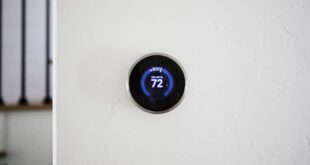Energy benchmarking can help you better understand your commercial property’s energy use and monitor performance over time. It allows for comparisons among similar building types and helps identify which ones could operate more efficiently.
The Environmental Protection Agency and its ENERGY STAR® Program offers a free online tool called Portfolio Manager that allows users to track and assess building energy consumption for a single building or an entire portfolio. Portfolio Manager can help comply with local energy laws, set investment priorities, identify under-performing buildings, verify efficiency improvements and receive EPA recognition for superior energy performance.
If you have already been through the benchmarking process, are you on track to increase your building’s energy performance rating this year? While benchmarking helps you understand the current state of your building’s performance, an energy audit can help you identify and prioritize opportunities for substantial energy and operational savings.
Not all energy audits are equal however. The American Society of Heating, Refrigerating and Air-Conditioning Engineers (ASHRAE) recognizes three levels that vary in scope and cost:
Walk-Through Assessment (Level 1): This is the least costly of the three levels. It provides an energy bill analysis and possibly a brief survey of the facility. Subsequently, the report outlines no-cost and low-cost opportunities.
Energy Survey and Analysis (Level 2): A more detailed analysis taking into consideration the owners’ operations and maintenance, constraints and economic factors. The final report may include potential capital-intensive energy efficiency opportunities.
Detailed Analysis (Investment Grade Audit) (Level 3): This analysis provides a higher degree of data collection, monitoring and analysis and focuses on capital-intensive opportunities. The report usually includes detailed analysis on project cost and savings and may include a timeline for implementation for each measure.
Benchmarking and energy analysis work together as integral steps of a business’ energy management plan. The benchmarking process can help you identify your building’s performance rating and an energy audit can help you effectively evaluate the energy-saving opportunities so you can understand where your investment in sustainability will have the greatest impact.
Incentives from government and/or utility-based programs may be available to help pay for the cost of an energy audit, as well as energy efficiency upgrades. For example, the Con Edison Commercial and Industrial Energy Efficiency Program offers:
• Payment of up to 50% of costs, with a cap of $67,000, for a Level 3 energy audit
• Rebates for high-efficiency electric and gas equipment including lighting fixtures, LED exit signs, chillers, packaged heating, ventilation, and air-conditioning systems, motors, water and steam boilers
• Performance-based custom incentives for installing high-efficiency equipment or energy-saving solutions not eligible for equipment rebates
Check to see what funding may be available in your area.
Join the discussion on LinkedIn (Con-Edison-Commercial-Industrial), Facebook (ConEd Green Team C&I), Twitter (ConEd Green Team C&I) and YouTube (ConEd Green Team C&I).
The Con Edison Green Team has an energy efficiency program available for almost everyone. To learn which program is right for you, call the Green Team at 1-877-860-6118 or visit www.conEd.com/greenteam.
David Pospisil is Program Manager of Con Edison’s Commercial & Industrial Energy Efficiency Program, New York, N.Y.
 Alternative Energy HQ solar power for homes, wind energy, and bio fuel issues
Alternative Energy HQ solar power for homes, wind energy, and bio fuel issues







